Power Pole Transformer Sizing: How to Choose the Right Capacity for Your Distribution Line?
Are you struggling to determine the right size for your power pole transformer? Choosing the wrong capacity can lead to inefficiency, increased costs, and even safety hazards. Many engineers and planners face this challenge when designing or upgrading electrical distribution systems.
Proper power pole transformer sizing involves calculating peak and average load requirements, considering factors like distance, load type, and climate. The right size ensures efficient power distribution, prevents overloading, and reduces energy losses. It’s crucial to balance current needs with future growth projections.
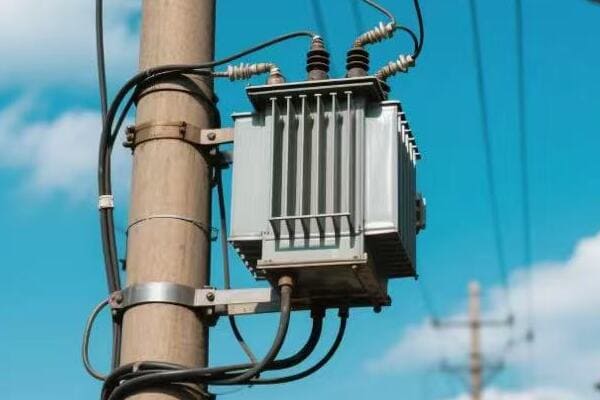
In this article, I’ll guide you through the process of selecting the right transformer capacity for your distribution line. We’ll explore the factors that influence sizing, common mistakes to avoid, and provide practical examples to help you make informed decisions. Whether you’re a seasoned engineer or new to the field, this guide will help you optimize your power distribution system.
Why Proper Sizing Matters for Safety and Efficiency?
Have you ever wondered why some transformers fail prematurely or why your electricity bill seems higher than it should be? The answer often lies in improper transformer sizing. But why exactly is getting the right size so crucial?
Proper transformer sizing is essential for both safety and efficiency. Oversized transformers waste energy and increase costs, while undersized ones risk overheating and failure. Correct sizing ensures optimal performance, reduces energy losses, extends equipment life, and maintains voltage stability.

The Importance of Proper Transformer Sizing
Let’s delve into why sizing matters so much:
Safety Considerations
-
Overheating Prevention:
- Undersized transformers can overheat under heavy loads
- This can lead to insulation breakdown and potential fires
-
Voltage Stability:
- Properly sized transformers maintain stable voltage levels
- This protects connected equipment from damage
I once investigated a transformer failure that was caused by chronic undersizing. The transformer had been running hot for months, eventually leading to a catastrophic breakdown. This incident not only caused a prolonged power outage but also posed significant safety risks.
Efficiency Factors
-
Energy Losses:
- Oversized transformers have higher core losses
- Undersized units suffer from increased copper losses
-
Cost Implications:
- Right-sized transformers optimize initial investment
- They also reduce long-term operating costs
-
Lifespan:
- Properly sized units have longer operational lives
- This reduces replacement frequency and associated costs
Here’s a table comparing the effects of different sizing scenarios:
| Sizing | Safety Impact | Efficiency Impact | Cost Impact |
|---|---|---|---|
| Undersized | High risk of failure | High copper losses | Lower initial cost, high operating cost |
| Properly Sized | Optimal safety | Balanced losses | Optimal lifecycle cost |
| Oversized | Low risk of failure | High core losses | High initial cost, higher than necessary operating cost |
In my experience, the consequences of improper sizing can be far-reaching. I recall a project where an oversized transformer was installed in a small commercial area. While it seemed like a "safe" choice, the excess capacity led to significant energy waste. Over five years, the additional energy losses cost more than the price of the transformer itself.
Another aspect often overlooked is the impact of sizing on power quality. In one residential area, I found that undersized transformers were causing voltage fluctuations during peak hours. This not only affected the residents’ quality of life but also damaged sensitive electronic equipment.
Proper sizing also plays a crucial role in future-proofing your power distribution system. I always advise considering potential load growth when sizing transformers. In a rapidly developing suburban area, we chose a slightly larger transformer capacity, anticipating future demand. This foresight saved the utility company from costly upgrades just a few years later.
It’s also worth noting the environmental impact of transformer sizing. Energy-efficient transformers not only save money but also reduce carbon footprint. In a recent project, we calculated that right-sizing transformers across a small city could reduce CO2 emissions by hundreds of tons annually.
Lastly, proper sizing is crucial for maintaining grid stability, especially with the increasing integration of renewable energy sources. I’ve worked on projects where we had to carefully size transformers to handle the variable output from solar and wind installations while maintaining stable voltage for conventional loads.
By understanding the importance of proper transformer sizing, we can design safer, more efficient, and more cost-effective power distribution systems. Remember, the right size isn’t just about meeting current needs – it’s about balancing present demands with future growth and overall system efficiency.
Understanding kVA Ratings and Load Demand?
Have you ever wondered what those kVA numbers on transformers mean? Or how to determine the right capacity for your power needs? Understanding kVA ratings and load demand is crucial for proper transformer sizing, but many find these concepts confusing.
kVA (kilovolt-amperes) ratings indicate a transformer’s capacity to deliver power. Load demand refers to the actual power required by connected devices. Proper sizing involves matching the kVA rating to the expected peak load demand, considering factors like load diversity and future growth.
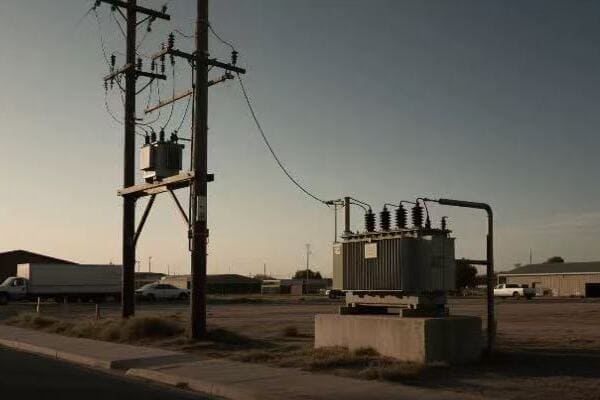
Diving into kVA Ratings and Load Demand
Let’s break down these important concepts:
Understanding kVA Ratings
-
Definition:
- kVA stands for kilovolt-amperes
- It’s a measure of apparent power
-
Relationship to Power:
- kVA = Voltage (kV) × Current (A)
- For single-phase: kVA = kW ÷ Power Factor
- For three-phase: kVA = (√3 × kW) ÷ Power Factor
I often use a water analogy to explain kVA. If you think of electricity as water in a pipe, kVA is like the pipe’s capacity – how much water it can potentially carry.
Load Demand Basics
-
Definition:
- Actual power required by connected devices
- Measured in kW (kilowatts)
-
Types of Load:
- Continuous Load: Constant power draw
- Intermittent Load: Varies over time
- Peak Load: Maximum power demand at any given time
Relationship Between kVA and Load
- Transformer kVA rating should exceed the maximum expected load
- Consider power factor: kW = kVA × Power Factor
Here’s a table showing typical kVA ratings and their applications:
| kVA Rating | Typical Application |
|---|---|
| 5-25 kVA | Residential areas |
| 25-100 kVA | Small commercial |
| 100-500 kVA | Large commercial/small industrial |
| 500+ kVA | Large industrial/substations |
In my experience, one of the most common mistakes in transformer sizing is not accounting for the difference between connected load and actual demand. I recall a project where a factory’s connected load was 1000 kVA, but the actual peak demand never exceeded 600 kVA. Sizing the transformer based on connected load would have led to significant oversizing and inefficiency.
Load diversity is another crucial concept in understanding demand. Not all connected devices operate simultaneously at full capacity. I once worked on a residential development where considering load diversity allowed us to reduce the transformer size by 30% without compromising reliability.
Power factor correction is also vital in relating kVA to actual power needs. In an industrial setting, we implemented power factor correction capacitors, which allowed for a smaller transformer while still meeting the facility’s power requirements.
Future growth projection is a key aspect of load demand analysis. I always advise clients to consider a 5-10 year growth plan when sizing transformers. In a rapidly growing tech park, we sized transformers with a 25% capacity buffer, which proved crucial as new businesses moved in over the next few years.
Understanding load profiles is essential for accurate sizing. I use data logging tools to capture load variations over time. In one commercial complex, this approach revealed that peak demand occurred for only a few hours each day, allowing for more precise transformer sizing.
Harmonic loads present a unique challenge in kVA calculations. In a data center project, we had to oversize transformers slightly to account for harmonic heating effects from non-linear loads like computer power supplies.
Lastly, it’s important to consider the impact of energy efficiency initiatives on load demand. In a recent retrofit project, upgrading to LED lighting and high-efficiency HVAC systems significantly reduced the load, allowing for downsizing of the transformer during replacement.
By thoroughly understanding kVA ratings and load demand, we can ensure that transformers are sized correctly, balancing efficiency, cost, and reliability. Remember, the goal is not just to meet current needs but to provide a flexible, efficient solution for years to come.
Factors That Influence Sizing: Distance, Load Type, Climate?
Have you ever wondered why transformers of the same kVA rating might be used differently in various locations? The answer lies in the numerous factors that influence transformer sizing beyond just the load demand. But what are these factors, and how do they affect our sizing decisions?
Transformer sizing is influenced by factors like distance from the source, types of loads served, and local climate conditions. Longer distances may require larger transformers to compensate for voltage drop. Different load types (residential, industrial) have varying demand patterns. Climate affects cooling efficiency and load variations.
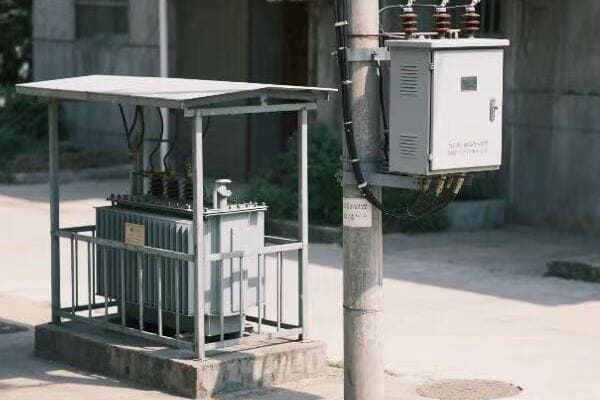
Exploring Key Factors in Transformer Sizing
Let’s delve into the main factors that influence transformer sizing:
1. Distance from Power Source
-
Voltage Drop Considerations:
- Longer distances lead to higher voltage drops
- May require larger transformers to maintain voltage stability
-
Line Loss Compensation:
- Increased size can help offset transmission losses
I once worked on a rural electrification project where we had to significantly upsize transformers due to the long distances involved. The voltage drop over several miles was substantial, and larger transformers were necessary to maintain proper voltage at the point of use.
2. Load Type and Characteristics
-
Residential vs. Commercial vs. Industrial:
- Each has different load patterns and peak demands
-
Load Diversity:
- More diverse loads often allow for smaller transformers
-
Power Factor:
- Low power factor loads may require larger transformers
3. Climate and Environmental Conditions
-
Ambient Temperature:
- Higher temperatures reduce transformer cooling efficiency
- May necessitate larger units or additional cooling
-
Humidity and Altitude:
- Affect cooling and insulation performance
-
Extreme Weather:
- May require more robust or larger units in storm-prone areas
Here’s a table summarizing how these factors influence sizing:
| Factor | Impact on Sizing | Consideration |
|---|---|---|
| Distance | Increase for long distances | Voltage drop compensation |
| Load Type (Residential) | Moderate sizing | High diversity factor |
| Load Type (Industrial) | Larger sizing | Lower diversity, higher peaks |
| Hot Climate | Increase sizing | Reduced cooling efficiency |
| High Altitude | Possible increase | Reduced air cooling efficiency |
In my experience, the interplay of these factors can lead to surprising sizing requirements. I recall a project in a hot, arid region where we had to significantly oversize transformers compared to similar loads in temperate climates. The combination of high ambient temperatures and dust accumulation on cooling surfaces necessitated larger units to maintain safe operating temperatures.
Load type considerations can be particularly tricky. In a mixed-use development project, we had to carefully balance the diverse load types. The residential areas had high diversity and relatively low demand, while the commercial spaces had more concentrated, higher power needs. This required a nuanced approach to transformer sizing throughout the development.
Environmental factors often necessitate creative solutions. In a coastal area prone to flooding, we not only had to consider the usual sizing factors but also had to design for occasional submersion. This led to choosing sealed, slightly oversized units that could withstand periodic flood conditions without compromising long-term reliability.
The impact of renewable energy integration is becoming an increasingly important factor in transformer sizing. In a recent project involving a large solar farm, we had to size transformers not just for the maximum output but also for the variable nature of solar generation. This required careful consideration of both step-up transformers at the generation site and distribution transformers managing the input to the grid.
Harmonic loads present another challenge in sizing considerations. In an area with a high concentration of electronic loads (like a tech park), we had to factor in the additional heating effects of harmonics. This often results in choosing a transformer with a higher kVA rating than the basic load calculations would suggest.
Future growth projections play a crucial role in sizing decisions. I always advise considering not just current needs but potential future developments. In a rapidly growing suburban area, we sized transformers with about 20% extra capacity, which proved invaluable as new housing developments sprang up over the next few years.
Lastly, the increasing adoption of electric vehicles is adding a new dimension to transformer sizing, especially in residential areas. In a recent suburban project, we had to factor in the potential for widespread EV adoption, leading to slightly larger transformer sizes to accommodate future charging needs.
By carefully considering these various factors – distance, load type, climate, and emerging trends – we can ensure that transformer sizing is optimized for both current needs and future developments. This holistic approach leads to more reliable, efficient, and future-proof power distribution systems.
How to Calculate Peak and Average Load Requirements?
Are you finding it challenging to determine the right transformer size for your project? One of the most crucial steps in transformer sizing is accurately calculating peak and average load requirements. But how do you go about this complex task?
Calculating peak and average load requirements involves analyzing historical data, conducting load surveys, and using predictive modeling. Peak load represents the maximum power demand, while average load reflects typical usage. Proper calculation considers load diversity, growth factors, and seasonal variations to ensure appropriate transformer sizing.
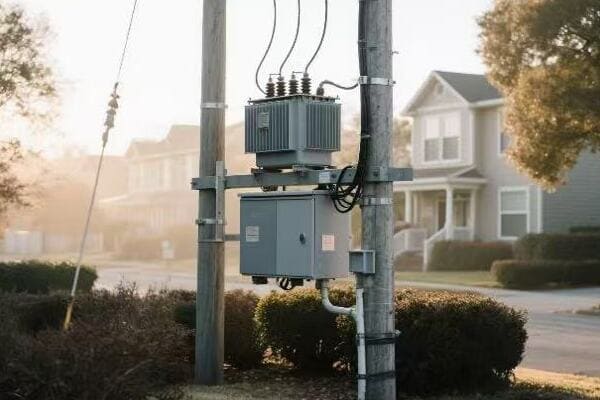
Steps to Calculate Peak and Average Load Requirements
Let’s break down the process of calculating load requirements:
1. Gather Historical Data
- Collect past electricity usage data
- Analyze at least 12 months of data for seasonal patterns
2. Conduct Load Surveys
- Measure actual power consumption of connected devices
- Use power logging devices for accurate readings
I once conducted a load survey for a small industrial park that revealed surprising results. The actual peak load was 30% lower than what the sum of all connected equipment suggested, highlighting the importance of real-world measurements.
3. Determine Diversity Factor
- Calculate the ratio of the sum of individual maximum demands to the maximum demand on the system
- Diversity Factor = Sum of Individual Max Demands ÷ System Max Demand
4. Calculate Connected Load
- Sum up the nameplate ratings of all connected equipment
- Connected Load = Σ (Rated Power of Each Device)
5. Estimate Peak Load
- Apply diversity factor to connected load
- Peak Load = Connected Load × (1 ÷ Diversity Factor)
6. Calculate Average Load
- Typically 60-70% of peak load for residential areas
- Can vary significantly for commercial and industrial applications
Here’s a table showing typical diversity factors:
| Load Type | Typical Diversity Factor |
|---|---|
| Residential | 0.2 – 0.4 |
| Commercial | 0.5 – 0.7 |
| Industrial | 0.7 – 0.9 |
In my experience, one of the most common mistakes in load calculation is relying solely on connected load without considering diversity. I remember a project for a large office building where the initial calculations based on connected load suggested a 1000 kVA transformer. However, after a detailed load study and applying appropriate diversity factors, we determined that a 630 kVA transformer was more than sufficient.
Seasonal variations can significantly impact load calculations. In a resort area project, we found that the peak load during the tourist season was almost double the off-season load. We had to size the transformer to handle these seasonal peaks while remaining efficient during lower demand periods.
Future growth projection is crucial in load calculations. I always advise clients to consider a 5-10 year growth plan. In a rapidly developing commercial area, we added a 25% capacity buffer to our calculations, which proved invaluable as new businesses moved in over the next few years.
Power factor correction can greatly affect load calculations. In an industrial setting, implementing power factor correction allowed us to reduce the required transformer size by 15%, resulting in significant cost savings.
For areas with significant non-linear loads, such as data centers or industrial facilities with many variable frequency drives, harmonic analysis is essential. In one project, we had to oversize the transformer by 20% to account for harmonic heating effects, ensuring long-term reliability.
Load profiling is another valuable tool in accurate load calculation. By using data loggers to capture load variations over time, we can get a more precise picture of peak and average demands. In a mixed-use development project, this approach allowed us to optimize transformer sizing for different areas based on their unique load profiles.
It’s also important to consider the impact of energy efficiency initiatives on load calculations. In a recent retrofit project for a manufacturing facility, upgrading to more efficient equipment reduced the peak load by 25%, allowing for a smaller transformer during replacement.
Lastly, the increasing adoption of renewable energy sources and electric vehicles adds complexity to load calculations. In a recent residential development project, we had to factor in potential solar panel installations and EV charging stations. This required a more flexible approach to transformer sizing, allowing for bidirectional power flow and potential load growth.
By carefully considering all these factors and using a combination of historical data, real-world measurements, and predictive modeling, we can accurately calculate peak and average load requirements. This precision in load calculation is crucial for optimal transformer sizing, ensuring efficiency, reliability, and future-readiness in our power distribution systems.
Common Sizing Mistakes and How to Avoid Them?
Have you ever wondered why some power systems underperform or why energy costs sometimes skyrocket unexpectedly? Often, these issues can be traced back to common mistakes in transformer sizing. But what are these mistakes, and how can we avoid them?
Common transformer sizing mistakes include overreliance on nameplate ratings, ignoring load diversity, neglecting future growth, and overlooking environmental factors. To avoid these, use actual load data, consider diversity factors, plan for future expansion, and account for local conditions. Proper sizing ensures efficiency, reliability, and cost-effectiveness.

Identifying and Avoiding Common Sizing Mistakes
Let’s explore the most frequent sizing errors and how to prevent them:
1. Overreliance on Nameplate Ratings
Mistake:
- Summing up all connected load ratings without considering actual usage patterns
Solution:
- Conduct load surveys to determine actual power consumption
- Use data logging tools to capture real-world usage patterns
I once encountered a situation where a factory had installed a transformer based solely on the sum of all equipment ratings. This led to a significantly oversized and inefficient system. After conducting a detailed load study, we were able to downsize the transformer by 30%, improving efficiency and reducing costs.
2. Ignoring Load Diversity
Mistake:
- Assuming all loads operate at maximum capacity simultaneously
Solution:
- Apply appropriate diversity factors based on load type and usage patterns
- Use historical data to determine realistic peak loads
3. Neglecting Future Growth
Mistake:
- Sizing only for current needs without considering potential expansion
Solution:
- Factor in projected growth over the next 5-10 years
- Design for modularity to allow for future upgrades
4. Overlooking Environmental Factors
Mistake:
- Failing to account for local climate conditions and their impact on transformer performance
Solution:
- Consider ambient temperature, altitude, and humidity in sizing calculations
- Adjust sizing or specify additional cooling for harsh environments
Here’s a table summarizing these mistakes and their solutions:
| Common Mistake | Potential Consequence | Solution |
|---|---|---|
| Overreliance on Nameplate Ratings | Oversizing, inefficiency | Use actual load data |
| Ignoring Load Diversity | Oversizing, higher costs | Apply diversity factors |
| Neglecting Future Growth | Undersizing in long term | Plan for expansion |
| Overlooking Environmental Factors | Reduced performance, failures | Account for local conditions |
In my experience, one of the most overlooked aspects in transformer sizing is the impact of power quality issues. I recall a project in an industrial park where harmonics from variable frequency drives were causing excessive heating in the transformers. By failing to account for this, the initially installed transformers were undersized for the actual load. We had to retrofit harmonic filters and upgrade some transformers to resolve the issue.
Another common mistake is not considering the starting currents of large motors. In a water treatment plant project, the initial sizing didn’t account for the high inrush currents of pump motors. This led to voltage dips and potential nuisance tripping. We resolved this by slightly upsizing the transformer and implementing soft starters for the largest motors.
Seasonal load variations are often underestimated in sizing calculations. I worked on a project for a ski resort where the winter load was dramatically higher than the summer load. The challenge was to size a transformer that could handle peak winter demands while remaining efficient during low-load summer months. We ended up using a combination of a base load transformer and a smaller auxiliary unit that could be brought online during peak seasons.
The increasing integration of renewable energy sources presents new challenges in transformer sizing. In a recent microgrid project, we had to carefully size the transformer to handle both traditional loads and the variable input from solar panels. This required a more dynamic approach to sizing, considering bidirectional power flow and potential storage systems.
Energy efficiency initiatives can sometimes lead to sizing mistakes. In one case, a commercial building underwent extensive energy-efficient upgrades, significantly reducing its power demand. However, they failed to reassess their transformer sizing, leading to an oversized and inefficient system. It’s crucial to reevaluate transformer sizes after major efficiency improvements.
Lastly, the trend towards electrification, particularly with electric vehicles, is changing the landscape of transformer sizing. In a recent residential development project, we had to factor in potential EV charging loads. This required not just larger transformers but also more flexible designs to accommodate potential future load growth.
By being aware of these common mistakes and implementing the suggested solutions, we can ensure more accurate and efficient transformer sizing. This not only improves system performance and reliability but also optimizes costs and energy efficiency in the long run. Remember, proper sizing is not just about meeting current needs – it’s about creating a flexible, efficient, and future-proof power distribution system.
Power Pole Transformer Sizing Example (Case Study)?
Have you ever wondered how engineers determine the right size for a power pole transformer in a real-world scenario? Let’s walk through a practical example to illustrate the process. This case study will demonstrate how various factors come into play when sizing a transformer for a specific application.
This case study examines sizing a transformer for a new residential development. It considers factors like number of homes, average and peak load estimates, future growth, and local climate. The process involves load calculation, diversity factor application, and adjustment for environmental conditions to determine the optimal transformer size.
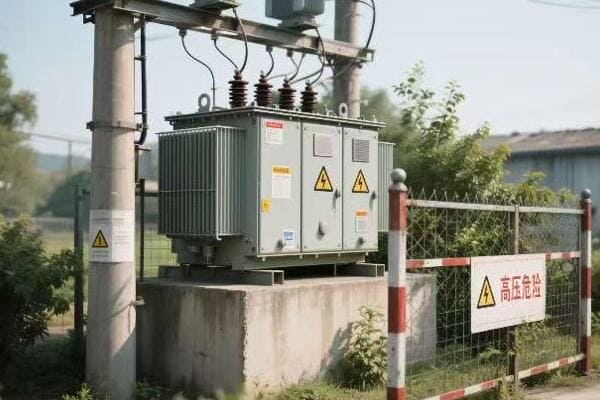
Case Study: Sizing a Transformer for a New Residential Development
Let’s go through the steps of sizing a transformer for a new neighborhood:
Scenario Details
- New development with 50 single-family homes
- Located in a suburban area with mild climate
- Future plans for 10 additional homes in 5 years
Step 1: Estimate Connected Load
- Average home size: 2,000 sq ft
- Estimated load per home: 7.5 kVA
- Total connected load: 50 homes × 7.5 kVA = 375 kVA
I remember a similar project where we initially overestimated the per-home load. After conducting surveys of comparable neighborhoods, we found that 7.5 kVA per home was a more realistic figure for this type of development.
Step 2: Apply Diversity Factor
- Typical diversity factor for residential areas: 0.3
- Peak demand estimate: 375 kVA × 0.3 = 112.5 kVA
Step 3: Consider Future Growth
- Additional 10 homes: 10 × 7.5 kVA × 0.3 = 22.5 kVA
- Total future peak demand: 112.5 kVA + 22.5 kVA = 135 kVA
Step 4: Account for Environmental Factors
- Mild climate: No significant derating required
- Add 10% capacity for safety margin
Step 5: Final Sizing Calculation
- Required capacity: 135 kVA × 1.1 = 148.5 kVA
- Select standard transformer size: 167 kVA
Here’s a summary table of our calculations:
| Calculation Step | Value |
|---|---|
| Total Connected Load | 375 kVA |
| Peak Demand (with diversity) | 112.5 kVA |
| Future Growth Allowance | 22.5 kVA |
| Subtotal | 135 kVA |
| Safety Margin (10%) | 13.5 kVA |
| Final Required Capacity | 148.5 kVA |
| Selected Transformer Size | 167 kVA |
In my experience, it’s crucial to validate these calculations with real-world data whenever possible. In a similar project, we installed temporary monitoring equipment in an existing comparable neighborhood. This gave us valuable insights into actual usage patterns, helping refine our estimates.
One factor we always consider is the potential for electric vehicle (EV) adoption. In this case study, we might want to add an additional allowance for EV charging. For instance, assuming 20% of homes might have EVs in the future, we could add:
10 EVs × 7.2 kW (Level 2 charger) × 0.5 (diversity factor for EV charging) = 36 kW additional capacity
This would bring our total required capacity to about 185 kVA, potentially pushing us to the next standard size of 250 kVA.
Another important consideration is the potential for renewable energy integration. If the development is likely to see significant solar panel installations, we might need to design for bidirectional power flow. This could affect our choice of transformer features, even if it doesn’t necessarily increase the kVA rating.
Load growth patterns can sometimes surprise us. In one similar project, we found that actual load growth exceeded projections due to increasing home office use and general electrification trends. It’s often wise to err on the side of caution when considering future capacity needs.
The impact of energy efficiency measures should also be considered. In some cases, aggressive energy efficiency standards in new construction have led to lower-than-expected loads. However, this is often balanced by increased electrification of heating and transportation.
Lastly, it’s important to consider the transformer’s efficiency at different load levels. In this case, the selected 167 kVA transformer will be operating at about 70-80% of its capacity under peak conditions, which is generally a good efficiency point for most transformers.
This case study demonstrates the complex interplay of factors in transformer sizing. By carefully considering current needs, future growth, environmental factors, and emerging trends, we can select a transformer size that will provide reliable, efficient service for years to come.
Tools and Standards to Use for Accurate Selection?
Are you feeling overwhelmed by the complexity of transformer sizing? You’re not alone. Many engineers struggle with this task, but fortunately, there are tools and standards available to help ensure accurate selection. But what are these resources, and how can you use them effectively?
Accurate transformer selection relies on tools like load calculation software, power system analysis programs, and thermal modeling tools. Key standards include IEEE C57.91 for loading guidance, ANSI C84.1 for voltage ratings, and NEC for installation requirements. These resources help engineers make informed decisions based on industry best practices.
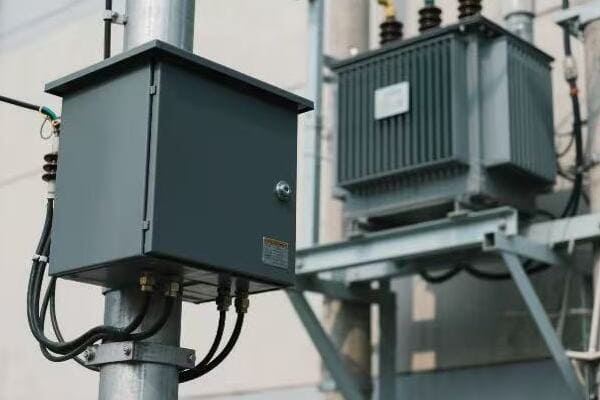
Essential Tools and Standards for Transformer Sizing
Let’s explore the key resources that can aid in accurate transformer selection:
Software Tools
-
Load Calculation Software:
- Examples: SKM Power Tools, ETAP
- Uses: Detailed load analysis and forecasting
-
Power System Analysis Programs:
- Examples: PowerWorld, DIgSILENT PowerFactory
- Uses: Simulate system behavior, voltage drop calculations
-
Thermal Modeling Tools:
- Examples: COMSOL Multiphysics, ANSYS
- Uses: Analyze transformer heating and cooling performance
I once used thermal modeling software to optimize the design of a transformer for a particularly hot climate. The insights gained allowed us to specify a more efficient cooling system, ensuring reliable operation in extreme conditions.
Key Standards and Guidelines
-
IEEE C57.91:
- Guide for Loading Mineral-Oil-Immersed Transformers
- Provides loading guidance and life expectancy calculations
-
ANSI C84.1:
- Electric Power Systems and Equipment – Voltage Ratings (60 Hz)
- Defines standard voltage ratings and tolerances
-
National Electrical Code (NEC):
- Article 450 covers transformer installation requirements
-
IEC 60076:
- Power Transformers – International standard for design and testing
Here’s a table summarizing these tools and standards:
| Resource Type | Examples | Primary Use |
|---|---|---|
| Load Calculation Software | SKM Power Tools, ETAP | Detailed load analysis |
| Power System Analysis | PowerWorld, DIgSILENT | System simulation |
| Thermal Modeling | COMSOL, ANSYS | Thermal performance analysis |
| Loading Standards | IEEE C57.91 | Loading guidance |
| Voltage Standards | ANSI C84.1 | Voltage ratings |
| Installation Codes | NEC Article 450 | Installation requirements |
In my experience, the effective use of these tools and standards can significantly improve the accuracy and reliability of transformer sizing decisions. I recall a project where we used a combination of load calculation software and power system analysis to optimize the sizing of transformers in a large industrial complex. This integrated approach allowed us to account for factors like motor starting currents and harmonic loads, resulting in a more robust and efficient system design.
One often overlooked aspect is the importance of accurate input data. Even the most sophisticated software tools are only as good as the data they’re fed. I always emphasize the need for thorough site surveys and historical load data analysis before inputting information into these tools.
The IEEE C57.91 standard has been particularly valuable in my work, especially when dealing with transformers in challenging environments. It provides crucial guidance on how various factors like ambient temperature and loading patterns affect transformer life expectancy. In one project, we used this standard to justify a slightly larger transformer size, which ultimately extended the expected life of the unit by several years.
For voltage considerations, ANSI C84.1 is indispensable. It helps ensure that the selected transformer can maintain voltage within acceptable limits under various loading conditions. This is especially critical in areas with long distribution lines or significant voltage fluctuations.
The National Electrical Code provides essential guidelines for safe transformer installation. However, it’s important to note that local codes may have additional requirements. I always advise checking with local authorities to ensure compliance with all relevant regulations.
In recent years, I’ve seen an increasing emphasis on energy efficiency in transformer selection. Tools that can model transformer losses under various loading conditions have become invaluable. These help in selecting units that not only meet current needs but also optimize long-term operating costs.
For projects involving renewable energy integration, specialized tools that can model bidirectional power flow and intermittent generation have become essential. These help in sizing transformers that can handle the unique challenges posed by solar and wind power systems.
Lastly, it’s worth mentioning the growing importance of lifecycle cost analysis tools. These help in balancing initial costs with long-term operational expenses, allowing for more informed decision-making in transformer selection.
By leveraging these tools and adhering to established standards, we can ensure more accurate, efficient, and reliable transformer sizing. Remember, while these resources are invaluable, they should complement, not replace, engineering judgment and experience. The best results come from a combination of advanced tools, industry standards, and seasoned expertise.
Conclusion
Proper power pole transformer sizing is crucial for efficient and reliable electrical distribution. It involves understanding load requirements, considering environmental factors, and using appropriate tools and standards. By avoiding common mistakes and following best practices, engineers can ensure optimal transformer performance, safety, and longevity in various applications.
Free CHBEB Transformer Catalog Download
Get the full range of CHBEB transformers in one catalog.
Includes oil-immersed, dry-type, pad-mounted, and custom solutions.
Quick Message
Request A free quote
We'd like to work with you
- +86 15558785111
- [email protected]
- +86 15558785111
What We Do
CHINA BEI ER BIAN (CHBEB) GROUP, with 218 million in registered capital, originated from Beijing Beierbian Transformer Group. Headquartered in Beijing for R&D, it operates major production bases in Nanjing and Yueqing, producing high-quality products.
Latest Product
address
BeiJing
No 3,RongJing East Road,BeiJing Economic Technological Development Area,BeiJing,China
JiangSu
No 7️Xiangfeng Road,Jiangning,NanJing,JiangSu,China
WenZhou
No.211, Wei 16 Road, Industrial Zone, Yueqing, Wenzhou, Zhejiang, China.
XiangYang Industrial Zone ,YueQing,WenZhou,ZheJiang,China
contact us
- [email protected]
- +86 13057780111
- +86 13057780111
- +86 15558785111
Copyright © Bei Er Bian Group


